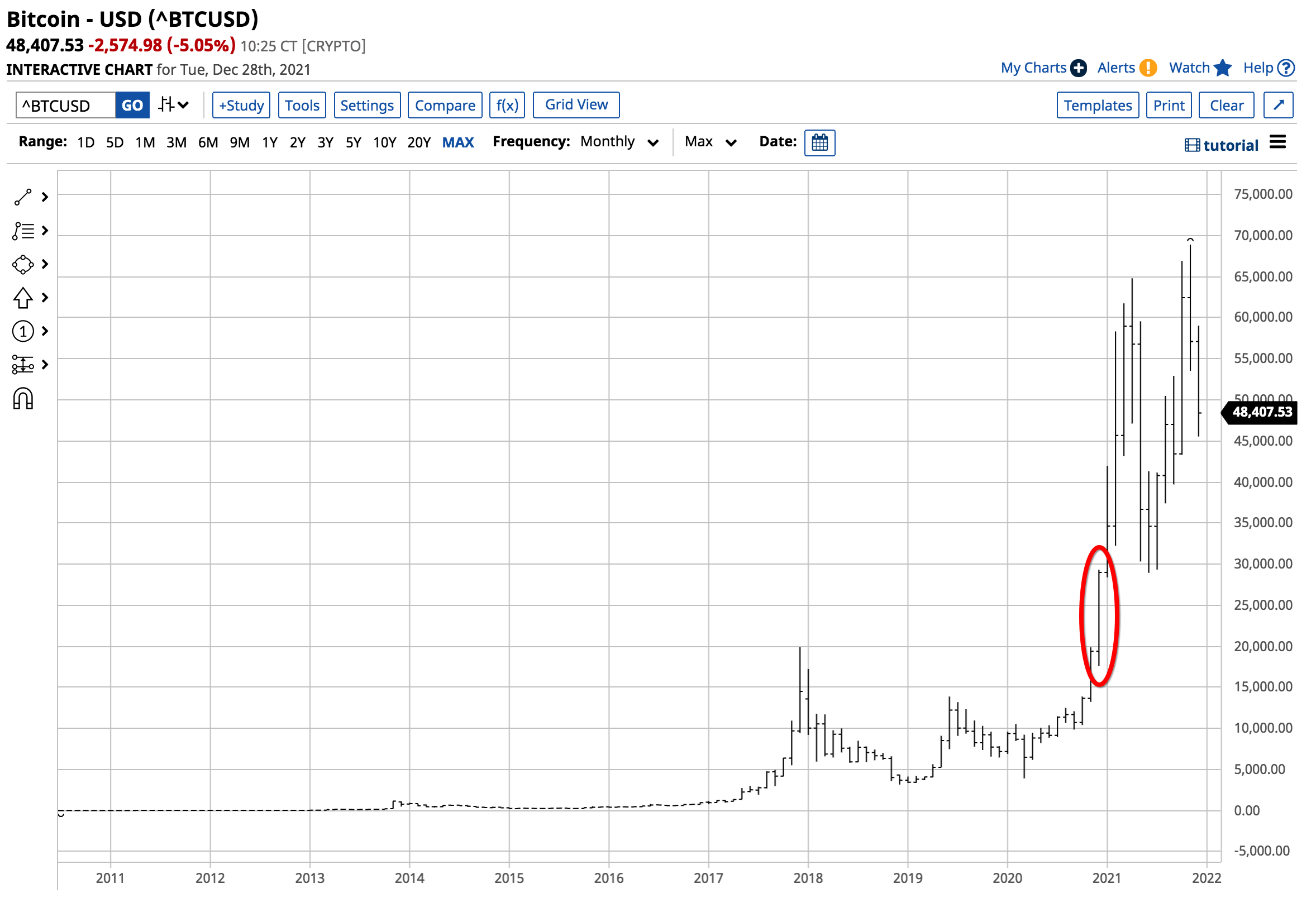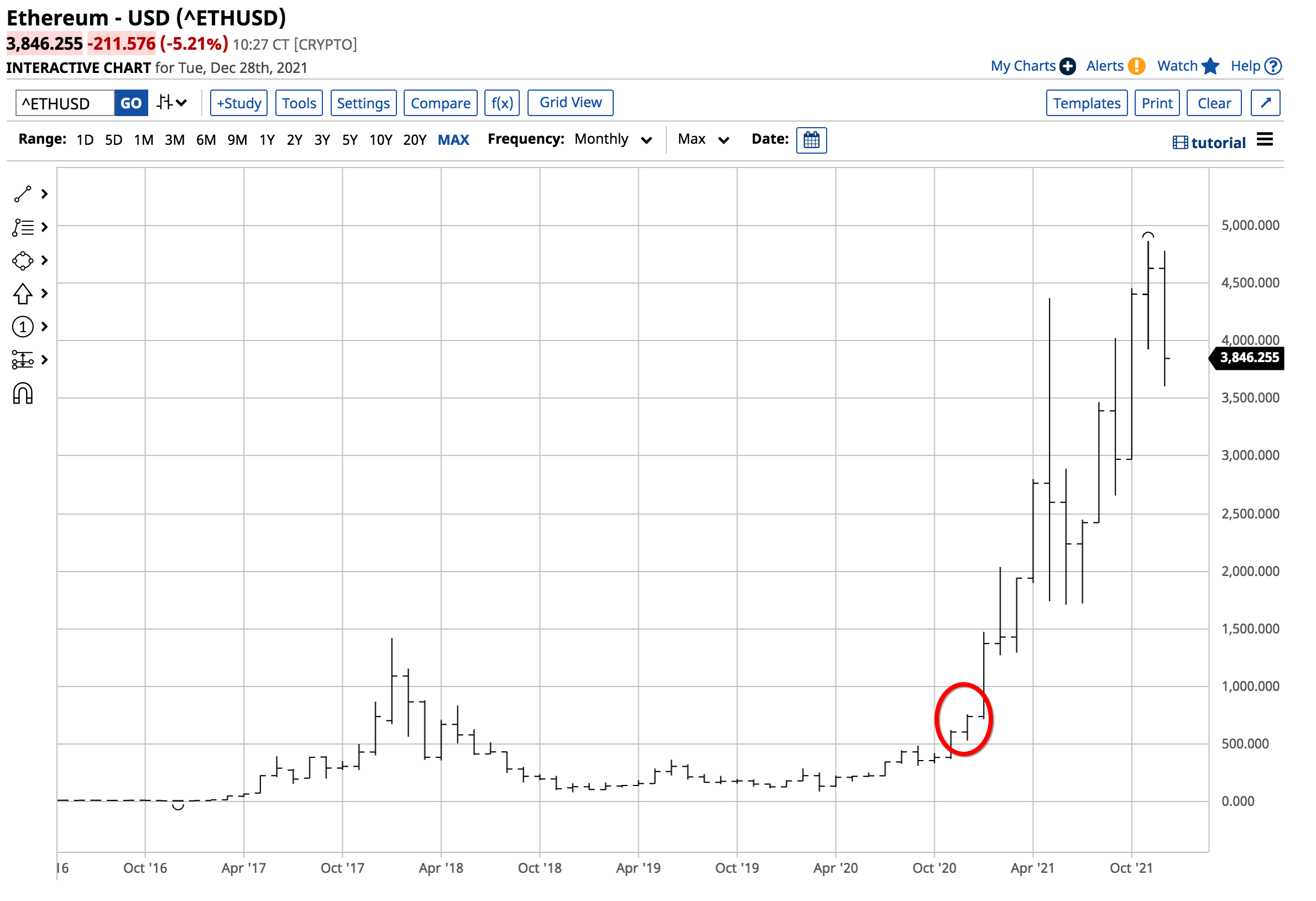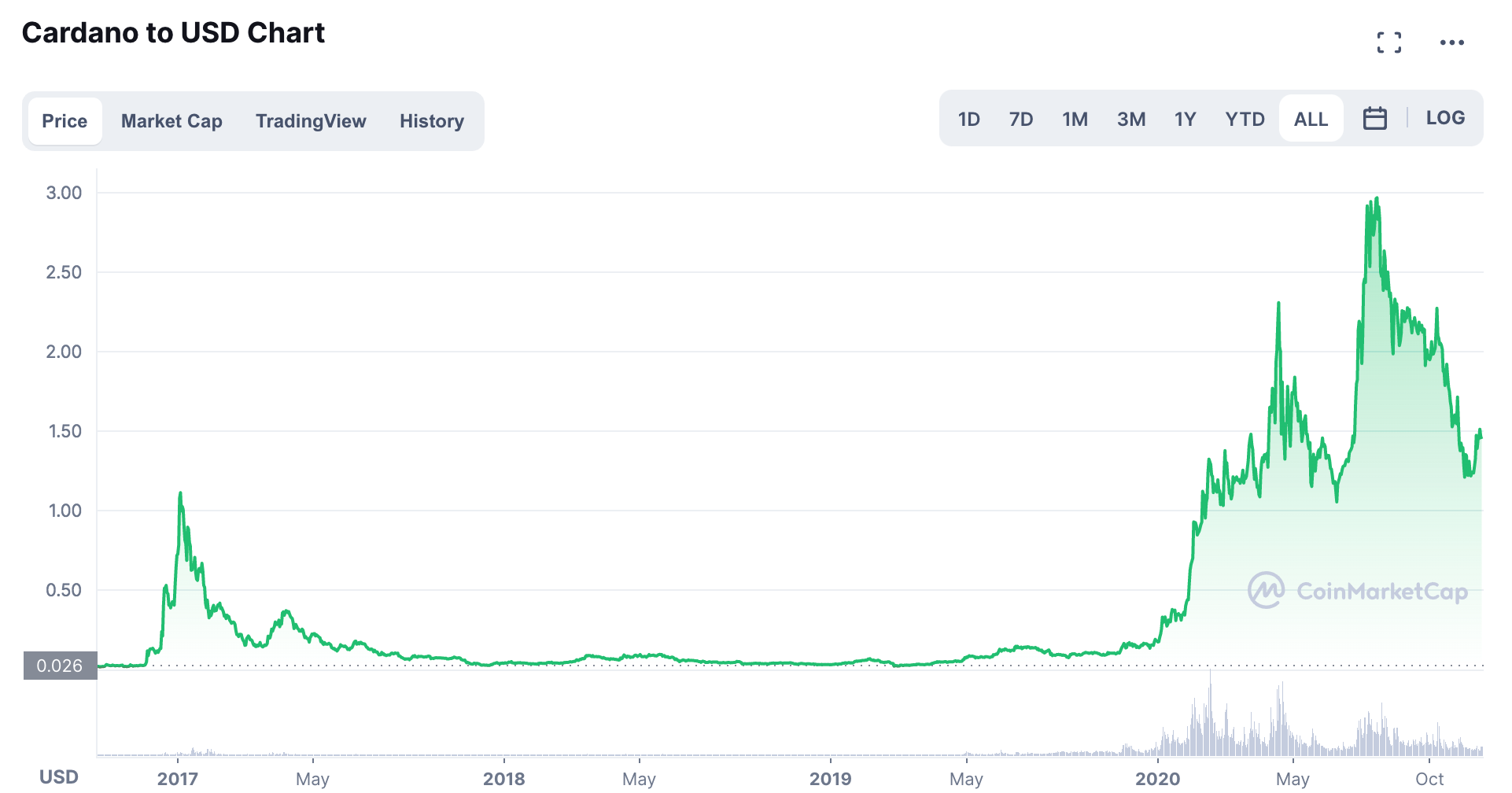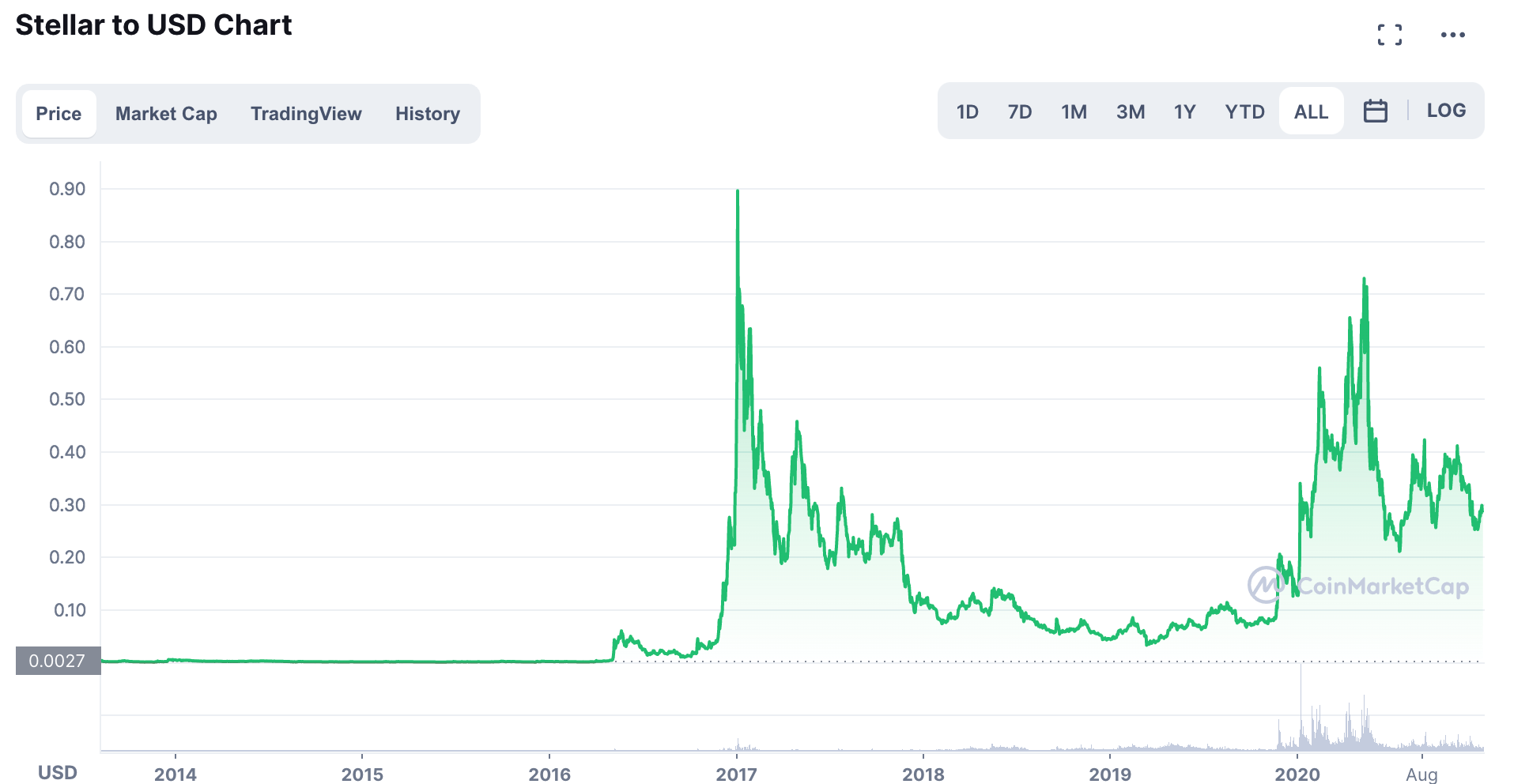This article was written exclusively for Investing.com
- Elon Musk put spotlight on mining and the environment
- PoW versus PoS means green cryptos should attract lots of interest
- Ethereum 2.0: a green alternative
- Cardano: also environmentally friendly
- Stellar: in the top 30
West Virginia Senator Joe Manchin recently dealt a blow to the Biden administration with regard to its environmental, aka green agenda, when the Senator said he would vote no on the President's $1.9 billion Build Back Better initiative. The legislation included items that would shift the US from fossil fuels to alternative and renewable energy sources over the coming years.
Senator Manchin cited rising inflation as the primary reason he could not support the spending. However, politics involves negotiation, and while the initiative in its current form may be a dead issue, it is likely to reemerge in 2022 in a smaller form.
Addressing climate change is not only a US issue. Indeed, there's support worldwide for a greener path for energy. Energy commodities power our lives and businesses each day. The shift from hydrocarbons to cleaner fuels impacts markets across all asset classes, and cryptocurrencies are no exception.
As we move forward into 2022, the burgeoning cryptocurrency asset class will be highly sensitive to environmental concerns. Mining the leading cryptocurrency, Bitcoin, is energy-intensive. Over the coming months and years, we will likely see the asset class that includes over 16,100 different cryptos shift to a greener path, one that requires less traditional energy input.
Elon Musk put spotlight on mining and the environment
Bitcoin’s price soared higher after news broke that Elon Musk’s company, Tesla (NASDAQ:TSLA), said it would accept the leading cryptocurrency as payment for the automaker’s EVs. However, Mr. Musk reversed course after he considered that Bitcoin mining runs counter to Tesla’s mission to move the world away from fossil fuel consumption.
Bitcoin mining is energy-intensive as it takes substantial computer power for the computational processes that mine the tokens.
Meanwhile, Bitcoin experienced impressive growth in 2021.

Source: Barchart
As of Dec. 28, volatile Bitcoin was trading at the $48,407.53 level, 67% higher than at the end of 2020, when it closed at $28,986.74. At time of publication, on Dec. 30, the price is even lower, currently $46,768, leaving the token still a very respectable 61% higher than where it closed at the end of last year.
Still, the greener cryptos with lower carbon footprints did even better in 2021, and that trend looks set to continue in 2022.
PoW versus PoS means green cryptos should attract lots of interest
Understanding the crypto carbon footprint involves explaining “proof of work” versus “proof of stake,” the two primary consensus mechanisms cryptocurrencies use to verify new transactions, add them to the blockchain, and create or uncover new tokens.
Proof of work (PoW) is the older mechanism used by Bitcoin, Ethereum 1.0, and many other cryptos. Proof of work and mining are closely related as the network requires a vast amount of processing power, making it energy-intensive.
Proof of work blockchains are secured and verified by virtual miners worldwide racing to solve a math puzzle. The winner gets to update the blockchain with the latest verified transactions. Crypto tokens are the rewards. Proof of work leaves a substantial carbon footprint as electricity generation comes from fossil fuels, including oil, natural gas, and coal.
Proof of stake (PoS) employs a network of “validators” who contribute or “stake” their crypto holdings in exchange for a chance of getting to validate new transactions, update the blockchain, and earn tokens. Proof of stake rewards the most invested validators with the most substantial stake held for the longest time.
When it comes to the environment, proof of stake leaves a far lower carbon footprint than proof of work.
Ethereum 2.0: a green alternative
The Ethereum 2.0 blockchain began rolling out in December 2020, with anticipated completion in 2022. The new and improved Ethereum protocol employs the faster, more efficient, and less energy-intensive proof of stake consensus mechanism. 
Source: Barchart
While Bitcoin moved more than 60% higher so far in 2021, Ethereum did far better. At the end of 2020, Ethereum stood at $738.912. At the $3,846.255 level on Dec. 28, the second-leading crypto moved over five times higher so far in 2021. At time of publication, Ethereum has moved lower, trading at $3,693.14, a gain of almost 400%.
One of the reasons for Ethereum’s ascent and outperformance compared to Bitcoin is the release of Ethereum 2.0, making it the proof of stake, greener cryptocurrency that offers speed and efficiency.
Cardano: also environmentally friendly
On Dec. 28, Cardano (ADA) was the sixth-leading cryptocurrency. At $1.47 per token, ADA’s market cap was $50.139 billion. Even after declining to $1.33 per token on Dec. 30, it remains in the number-six position with a market cap of $45.52 billion.
Cardano is a next-generation evolution of the Ethereum protocol. ADA is the native token of Cardano’s blockchain, which is a flexible, sustainable, and scalable platform for running smart contracts, allowing for many decentralized financial apps. Ethereum’s co-founder, Charles Hoskinson, developed Cardano.
Cardano is more energy-efficient than Bitcoin as it uses the proof of stake consensus mechanism. 
Source: CoinMarketCap
The chart highlights ADA’s close at 17.53 cents per token on Dec. 31, 2020. At the $1.47 level on Dec. 28, 2021, ADA outperformed Bitcoin and Ethereum in 2021 as the price rose by over eight times. Even at the $1.33 level on Dec. 30, 2021, ADA outperformed both tokens, gaining 600% in value.
Stellar: in the top 30
At 28.62 cents per token on Dec. 28, Stellar (XLM) was the 27th leading cryptocurrency with a $7.097 billion market cap. It remains in that position at time of publication on Dec. 30, though its price and market cap are lower—26.6 cents per token with a market cap of $6.62 billion.
Stellar came to market in 2014, forking off Ripple (XRP) to bridge the gap between traditional financial institutions and digital currencies.
The Stellar Development Foundation, a non-profit organization, operates Stellar. The Stellar network allows for exchanges of US dollars, Bitcoin, yen, and many traditional currencies and cryptos. The network’s native token, the Stellar Lumen (XLM), facilitates the trades on the blockchain-based distributed ledger at a fraction of a cent with great efficiency, translating to a lower carbon footprint.
The network allows individuals and institutions to create tokens for use on the network, which has inspired some to use the network for sustainability initiatives such as investing in renewable energy.
Stellar’s network does not use proof of work or proof of stake consensus mechanisms. Instead, it is open-source and relies on the authentication of transactions through a set of trustworthy nodes. The authentication cycle is shorter and faster, making for low costs and energy requirements.

Source: CoinMarketCap
XLM closed 2020 at the 13.24 cents level. At 28.62 cents on Dec. 28, XLM outperformed Bitcoin but underperformed Ethereum and Cardano in 2021. At the 26.6 cent level on Dec. 30 it still outperformed Bitcoin, but lagged ETH and ADA.
Ethereum 2.0, ADA, and XLM are green alternatives in the cryptocurrency asset class. Other environmentally friendly tokens, though with smaller to micro valuations include SolarCoin (SLR), BitGreen (BITG), Nano (NANO), IOTA (MIOTA), EOSIO (EOS), TRON (TRX), Burstcoin (BURST), as well as some others.
Remember though, all cryptos, including the greener asset class members, are highly volatile assets. Any investment should only involve capital that the investor is aware is 100% at risk. However, the shift towards protecting the environment favors the green cryptos as we move into 2022.
